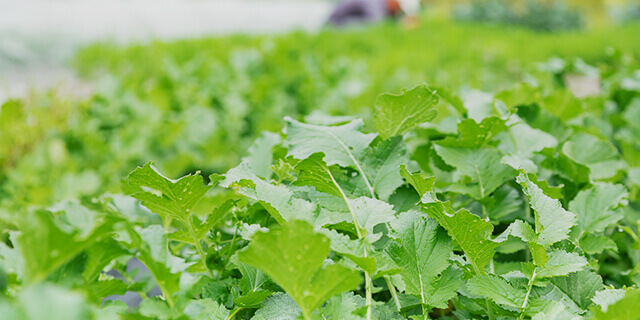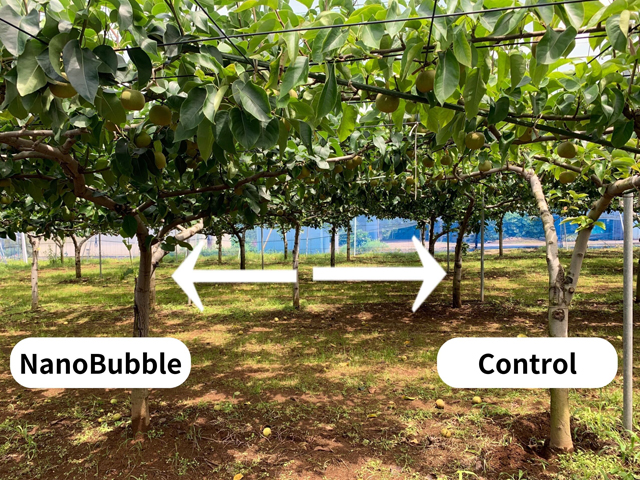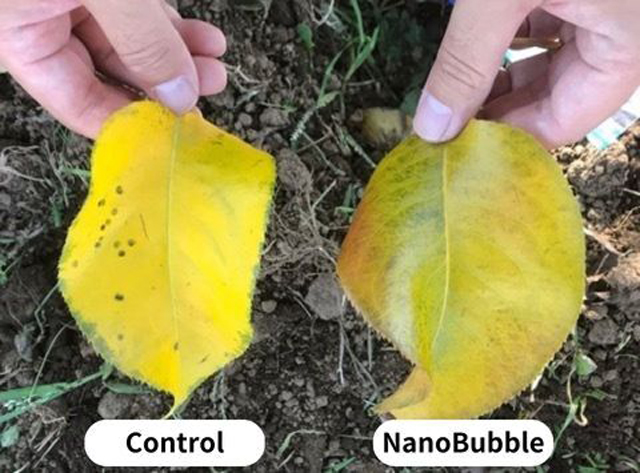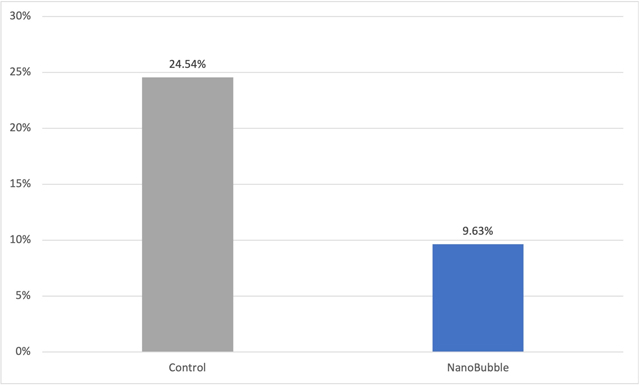Customer Feedback
【Chiba】The Potential of Oxygen Nano Bubble Irrigation as a Heat Mitigation Technology
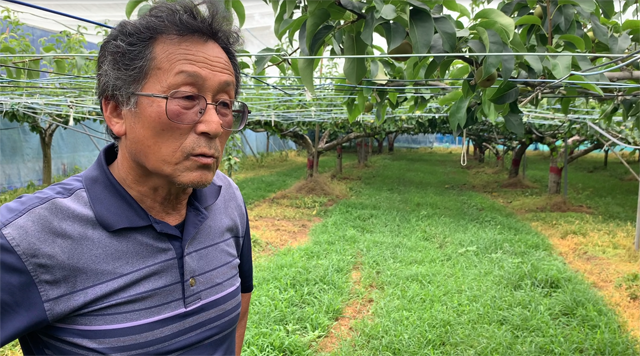
Shiroi-shi, Chiba
Mr. Katsumichi Ito, Mr. Yasuhiro Ito, Ito Pear Orchard
With five decades of experience, a pear farmer in Shirai, Chiba stands at the forefront of pear production, particularly within Chiba, the top pear-producing prefecture in the country.
As an active member of the Shirai Pear Agricultural Cooperative, they contribute to study sessions and specialized research groups, sharing valuable cultivation insights for the continual improvement of pear quality.
While upholding cherished traditional methods, this farmer is dedicated to exploring and incorporating new technologies.
Why did you choose to implement Nano Bubbles ?
Initially, we purchased a warehouse from Kakuichi for our pear direct sales store, and the person in charge of that warehouse later became involved in the nanobubble business. The person in charge of the warehouse later became involved in the nano bubble business.
The proposal to introduce nano bubble technology into pear cultivation was made by that person, and as a result, we decided to install a nano bubble generator. At first I was skeptical, with a mixture of interest and apprehension, but I decided to give it a try and started using it.
How effective was the Nano Bubble technology?
The verification was conducted by dividing the plots into two groups: those sprayed with Nano bubble water by drip irrigation (NB water sprayed plots) and those sprayed with non-treated water (conventional plots).
Observation of leaves showed that the NB-applied plots had thicker leaves and more clearly veined leaves.
When SPAD values, which represent chlorophyll in leaves, were measured, SPAD values tended to be higher in the NB-sprayed area. In addition, the NB-sprayed plots had a later leaf drop time than the conventional plots.
Other pear growers asked, ‘What did you do differently? The size and color of the leaves are totally different. Are you using some kind of nutrient?’ They even asked questions.
How did you feel about nutrient absorption?
We had the fallen leaves analyzed by Tokyo University of Agriculture, and the nitrogen content in the leaves of the area where oxygen nano bubble irrigation and foliar spraying are conducted was found to be high. The tree’s improved health led me to believe that it might be absorbing nutrients other than nitrogen.
Moreover, concerning the fruits, after trying it for a year, I noticed that the occurrence of ‘Urumi’ (honey spot disease) in the ‘Housui’ variety had decreased by about half. Even during harvest, I could feel the difference.
‘Urumi’ refers to honey spot symptoms, similar to ‘mitsu-shou’ in apples. Unlike apples, pears have soft flesh, so when honey spot symptoms appear, the fruits must be discarded. It is said to be caused by calcium deficiency.
Before introducing nano bubble, there were times when almost half of the harvest was discarded due to severe honey spot, and I even thought about giving up ‘Housui’ cultivation.
Weather abnormalities are one thing, but if we cannot overcome them, there is no point in producing crops. In reality, in the third year, when I counted the number of occurrences of ‘Urumi,’ in the conventional area, 20 out of 100 fruits (20%) experienced honey spot, whereas in the nano bubble spray zone, only 6 out of 100 fruits (6%) had honey spot.
The significant difference in SPAD values indicates that the leaves are healthier and more robust, suggesting improved absorption of calcium.
As a result, it is speculated that the strengthening of pear cell walls contributed to the reduction of ‘Urumi.’
Especially in this year of extreme weather, with intense heat, not only ‘Housui’ but also ‘Oushuu’ and ‘Akizuki’ varieties nationally exhibited flesh disorders known as browning. I believe that this approach may contribute to addressing such symptoms.
【Comparison of “Urumi”, Honey Spot Incidence (2021)】
※Since all “Urumi” are discarded, it is better to minimize the probability of “Urumi” occurring.
Please tell me about the potential of oxygen Nano bubble irrigation as a heat mitigation technology.
We utilize a solar panel-powered Nano bubble generator for drip irrigation, and in a year like 2023, characterized by no rainfall, we deeply appreciate the ability to irrigate as needed.
In fields without Nano bubble, manual hose dragging for irrigation imposed a substantial workload.
The introduction of Nano bubble significantly enhanced work efficiency, particularly in coping with the exceptionally hot summer experienced this year.
Furthermore, by pre-installing drip irrigation tubing on fruit tree shelves and creating a system that allows for irrigation in the fields using solar power, we have achieved the ability to water the pear trees immediately when needed.
This approach not only provides flexibility in responding to sudden temperature changes but is also considered effective in minimizing damage caused by high temperatures.
Future Verification
Pear cultivation is not known for providing immediate results.
It requires continuous efforts, and the outcomes may take time to manifest.
However, since introducing Nano bubble, we have gradually observed beneficial effects against issues like “Urumi” and “Rosellinia necatrix”. I am excited about the future possibilities of this technology.
Currently, climate change is making pear cultivation increasingly challenging. This year, we faced issues with fruit flesh disorders, but I believe that Nano bubble has the potential to address such challenges. Looking ahead, I aim to advance collaborative research and continue exploring the verification and practical application of Nano bubble technology in fruit trees.
I hope this technology proves to be a solution for adapting to climate change and enhancing productivity.


